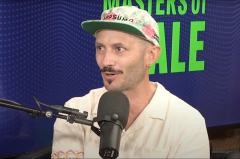Opinions expressed by Entrepreneur contributors are their own.
A tycoon is defined as a powerful, wealthy figure in business — someone who’s achieved dominance in their field. Few in hip-hop embody that term more than Earl “E-40” Stevens, the legendary Bay Area rapper often credited with bringing it into the culture’s vernacular.
Before he built a wine empire, launched a bestselling cookbook or created his own line of tequila, E-40 was just a kid from Vallejo hustling tapes out of a briefcase.
“Coming from the streets, I’m glad I listened to my grandma, to the church,” Stevens says. “They taught me to give back, stay prayed up, stay positive and leave the negativity behind.”
Now, a few decades and a few million dollars later, Stevens is still hustling with heart, always honoring the community that shaped him.
Related: Why the World’s Best CEOs Are Training Like Athletes — and How You Can, Too
Out of the trunk
While he’s best known for his distinctive Bay Area style and slang, Stevens is as much an entrepreneur as he is an artist — if not more. He started rapping at Grambling State University, where he and his friends formed a group called The Drifters and wrote a song that became the school’s unofficial anthem.
As his music started to take off, Stevens moved back to the Bay to chase rap full-time. Teaming up with his cousin, brother and sister, he formed MVP and hit the studio to record an EP. But making music was only half the battle — the other half was selling it.
“We had to sell tapes out of the trunk of our car,” Stevens says. “They used to call me Briefcase Earl, because I’d always walk around with a briefcase full of consignment sheets and a trunk full of cassettes, vinyl, or CDs.”
He remembers going block by block, stopping at liquor shops, auto body garages, barbershops and dropping off tapes on consignment.
As they continued to grow, Stevens and co tried to pitch their music to a local distributor. Unfortunately, one exec wasn’t keen on the idea.
“He said my voice was too fast, and that B-Legit rapped like he was reading,” Stevens recalls.
Not to be deterred, Stevens sought counsel from his uncle, Saint Charles, a one-time R&B musician himself.
“He grabbed this big ass distribution book, like the size of an encyclopedia,” Stevens laughs. “It had listings for all the retail stores that sold rap music.”
The group sat down and put together a one-sheet with some basic information about themselves, and began sending it out to record stores along with some tapes on consignment.
“Back then, it might take two or three weeks for the packages to get to places like Nebraska or Texas,” Stevens says. “But once they got there and people started playing the tapes in mom-and-pop stores, folks were like, ‘Who





